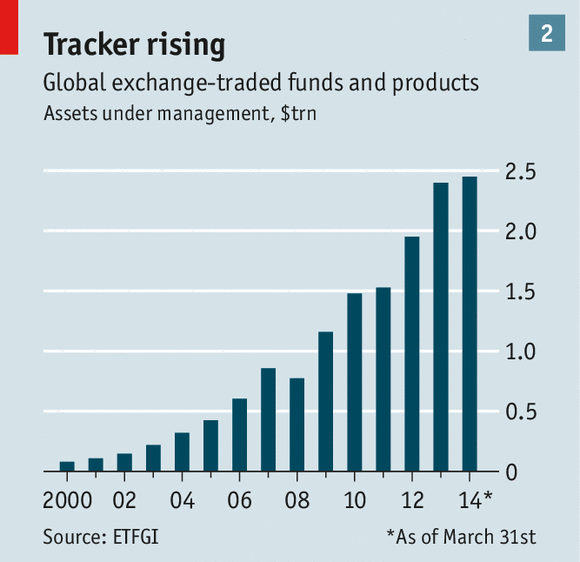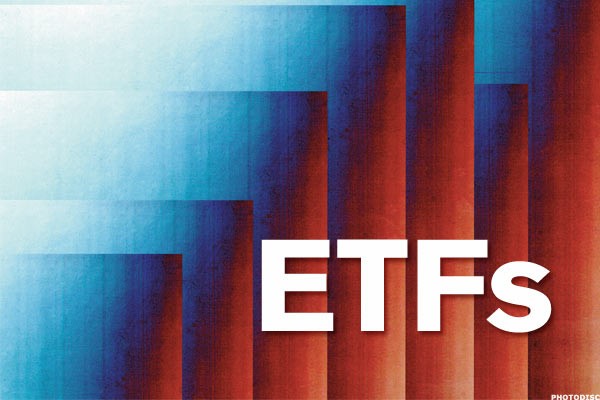Pump Up Your Portfolio With ETFs
Post on: 23 Май, 2015 No Comment

Similar to mutual funds, exchange-traded funds (ETFs) allow access to a number of types of stocks and bonds (or asset classes), provide an efficient means to construct a fully diversified portfolio, include index- and more active-management strategies, and are comprised of individual stocks or bonds. But, ETFs differ from mutual funds in ways that are advantageous to investors.
More from Investopedia:
Unlike mutual funds, ETFs are traded like any stock or bond and offer liquidity throughout the day. Moreover, ETFs generally do not pay out dividends and capital gains — instead, distributions are rolled into the trading price, avoiding a taxable event.
In this article, we’ll show you how to add these funds to your portfolio to make it more liquid, user-friendly and profitable.
Portfolio Construction
Modern portfolio construction theory (MPT) is centered on the concept that asset classes behave differently from one another. This means each asset class has its own unique risk and return profile, reacting differently during various economic events and cycles. The idea of combining various asset classes, each with unique attributes, is the basis for building a diversified portfolio. ETFs provide small investors a vehicle to achieve asset class diversification, substantially reducing overall portfolio risk.
Risk reduction is a concept that means many things to many people; therefore, a brief discussion of its use in this context is warranted.
Reducing Risk
Many investors believe that by holding a portfolio of 30 or more U.S. large-cap stocks, they are achieving sufficient diversification. This is true in that they are diversifying against company-specific risk, but such a portfolio is not diversified against the systematic behavior of U.S. large-cap stocks.
For example, U.S. large-cap stocks’ monthly returns as a whole average in the high teens, as seen in the S&P 500 15% average return from 1997 to 2007. So this means that if you held just U.S. large-cap stocks, you should reasonably expect to see volatility in your portfolio of plus or minus 15% on any given month. Such a high degree of volatility could be unsettling and drive irrational behavior such as selling out of fear or buying and leveraging out of greed. So risk reduction in this context is the minimization of monthly fluctuations in portfolio value.
Many ETF Asset Classes
There are many equity asset class exposures available through ETFs. These include international large-cap stocks, U.S. mid- and small-cap stocks, emerging market stocks, and sector ETFs. Although some of these asset classes are respectively more volatile than U.S. large caps traditionally, they can be combined to minimize portfolio volatility with a high degree of certainty. Simply put, this is because they generally zig and zag in different directions at different times. However, in times of extreme market stress, all equity markets tend to behave poorly over the short term. Because of this, investors should consider adding fixed-income exposure to their portfolios.
ETFs also offer exposure to U.S. nominal and inflation-protected fixed income. Unlike equities, fixed-income asset classes generally offer mid single-digit levels of volatility, making them ideal tools to reduce total portfolio risk. However, investors must be careful to neither use too little or too much fixed income given their investment horizons. You can even purchase ETFs that track commodities such as gold or silver or funds that gain when the overall market falls.
Investment Horizon
An individual’s investment horizon generally depends on the number of years until that person’s retirement. So, recent college graduates have about a 40-year time horizon (long-term), middle-aged people about a 20-year time horizon (mid-term), and those nearing or at retirement have a time horizon of zero-10 years (short-term). Considering that equity investments can easily underperform bonds over periods as long as 10 years and that bear markets can last many years, investors must have a healthy fear of market volatility and budget their risk appropriately.
Let’s look at an example:

It could be appropriate for a recent college graduate to adopt a 100% equity allocation. Conversely, it could be inappropriate for someone five years away from retirement to adopt such an aggressive posture. Nonetheless, it is not uncommon to see individuals with insufficient retirement assets bet on equity market appreciation to overcome savings shortfalls. This is the greed side of investor behavior, which could rapidly turn to fear in the face of a bear market, leading to disastrous results. Keep in mind that saving appropriately is just as important as how you structure your investments.
ETF Advantages in Portfolio Construction
In the context of portfolio construction, ETFs (especially index ETFs) offer many advantages over mutual funds. First and foremost, index ETFs are very cheap relative to any actively managed retail mutual fund. Such funds will typically charge about 1-1.5%, whereas index ETFs charge fees around 0.25-0.50%. Consider the benefits of saving 1% in fees on a $1-million portfolio — $10,000 per annum. Fee savings add up over time and should not be discounted during your portfolio design process.
Additionally, index ETFs sidestep another potential pitfall for individual investors: the risk that actively managed retail funds will fail to succeed. Generally speaking, individual investors are often ill equipped to evaluate the prospective success of an actively managed fund. This is due to lack of analytical tools, access to portfolio managers and overall lack of a sophisticated understanding of investments. Studies have shown that active managers generally fail to beat relevant market indexes over time. Prospectively picking a successful manager is difficult for even trained investment professionals.
As such, individual investors are wise to avoid active managers and the need to continuously watch, analyze and evaluate success or failure. Moreover, because the majority of your portfolio’s return will be determined by asset class exposures, there is little benefit to this pursuit. Avoiding active managers through index ETFs is yet another way to diversify and reduce portfolio risk.
Conclusion
In summary, index ETFs can be an invaluable tool to individual investors in constructing a fully diversified portfolio. They offer cheap access to systematic risk exposures such as the various U.S. and international equity asset classes as well fixed-income investments. They are traded daily like stock and can be purchased cheaply through your favorite discount brokerage firm. Index ETFs also avoid the risks of active management and the headaches of monitoring and evaluating those types of products. All in all, index ETFs offer unsophisticated investors the opportunity to build a relatively sophisticated portfolio with little headache and substantial cost savings. Consider them seriously in your investment activities.
by Eric Petroff
Eric Petroff is a senior consultant at Hammond Associates. He is a career investment professional and has worked in the industry for more than a decade. Eric received two Bachelor of Arts degrees from DePauw University in Indiana, one in economics and the other in Russian. Thereafter, he attended Webster University in St. Louis to obtain a Master of Business Administration with an emphasis in finance while simultaneously completing the Chartered Financial Analyst (CFA) designation. He is a member of the CFA Institute and the President of the CFA Society of St. Louis for 2007-08.














